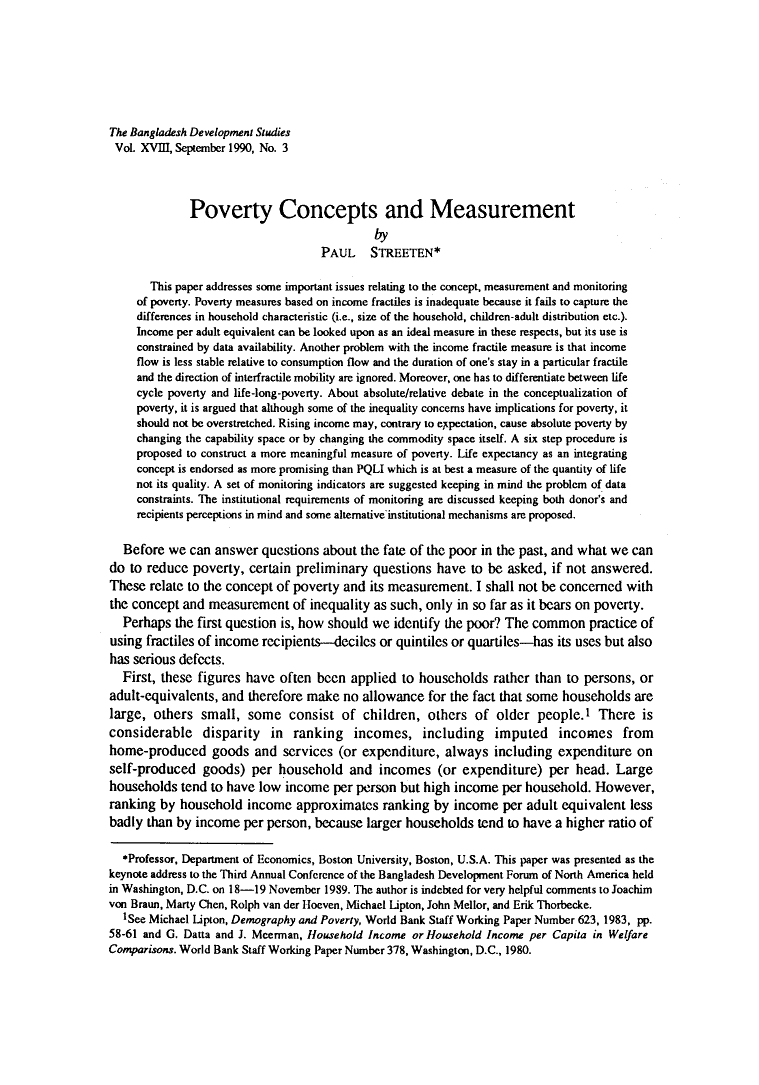
This paper addresses some important issues relating to the concept, measurement and monitoring of poverty. Poverty measures based on income fractiles is inadequate because it fails to capture the differences in household characteristic (i.e., size of the household, children-adult distribution etc.). Income per adult equivalent can be looked upon as an ideal measure in these respects, but its use is constrained by data availability. Another problem with the income fractile measure is that income flow is less stable relative to consumption flow and the duration of one's stay in a particular fractile and the direction of interfractile mobility are ignored. Moreover, one has to differentiate between life cycle poverty and life-long-poverty. About absolute/relative debate in the conceptualization of poverty, it is argued that although some of the inequality concerns have implications for poverty, it should not be overstretched. Rising income may, contrary to expectation, cause absolute poverty by changing the capability space or by changing the commodity space itself. A six step procedure is proposed to construct a more meaningful measure of poverty. Life expectancy as an integrating concept is endorsed as more promising than PQLI which is at best a measure of the quantity of life not its quality. A set of monitoring indicators are suggested keeping in mind the problem of data constraints. The institutional requirements of monitoring are discussed keeping both donor's and recipients perceptions in mind and some alternative institutional mechanisms are proposed.